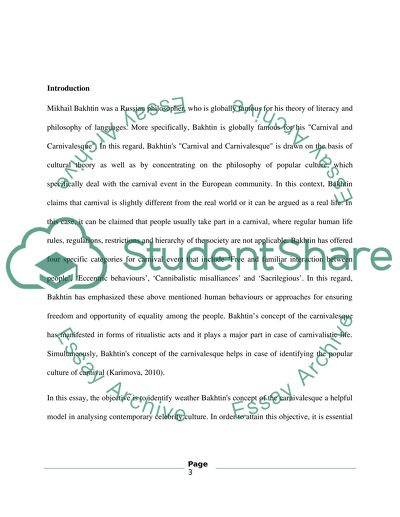Cite this document
(“Is Bakhtin's concept of the carnivalesque a helpful model in analyzing Essay”, n.d.)
Is Bakhtin's concept of the carnivalesque a helpful model in analyzing Essay. Retrieved from https://studentshare.org/journalism-communication/1673274-is-bakhtins-concept-of-the-carnivalesque-a-helpful-model-in-analyzing-contemporary-celebrity-culture
Is Bakhtin's concept of the carnivalesque a helpful model in analyzing Essay. Retrieved from https://studentshare.org/journalism-communication/1673274-is-bakhtins-concept-of-the-carnivalesque-a-helpful-model-in-analyzing-contemporary-celebrity-culture
(Is Bakhtin'S Concept of the Carnivalesque a Helpful Model in Analyzing Essay)
Is Bakhtin'S Concept of the Carnivalesque a Helpful Model in Analyzing Essay. https://studentshare.org/journalism-communication/1673274-is-bakhtins-concept-of-the-carnivalesque-a-helpful-model-in-analyzing-contemporary-celebrity-culture.
Is Bakhtin'S Concept of the Carnivalesque a Helpful Model in Analyzing Essay. https://studentshare.org/journalism-communication/1673274-is-bakhtins-concept-of-the-carnivalesque-a-helpful-model-in-analyzing-contemporary-celebrity-culture.
“Is Bakhtin'S Concept of the Carnivalesque a Helpful Model in Analyzing Essay”, n.d. https://studentshare.org/journalism-communication/1673274-is-bakhtins-concept-of-the-carnivalesque-a-helpful-model-in-analyzing-contemporary-celebrity-culture.


